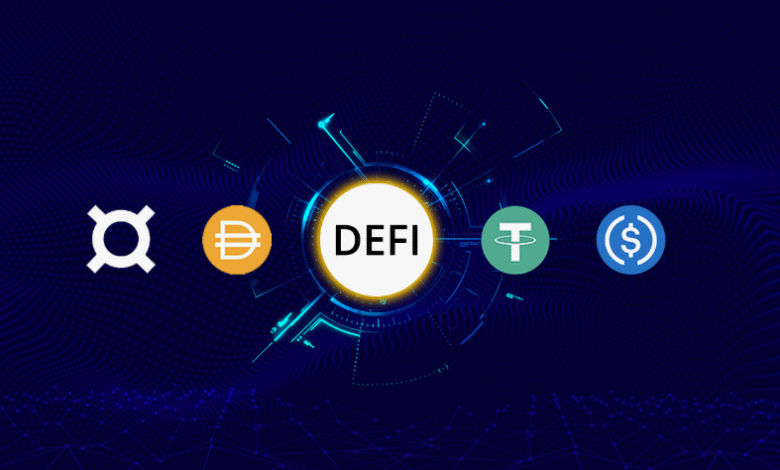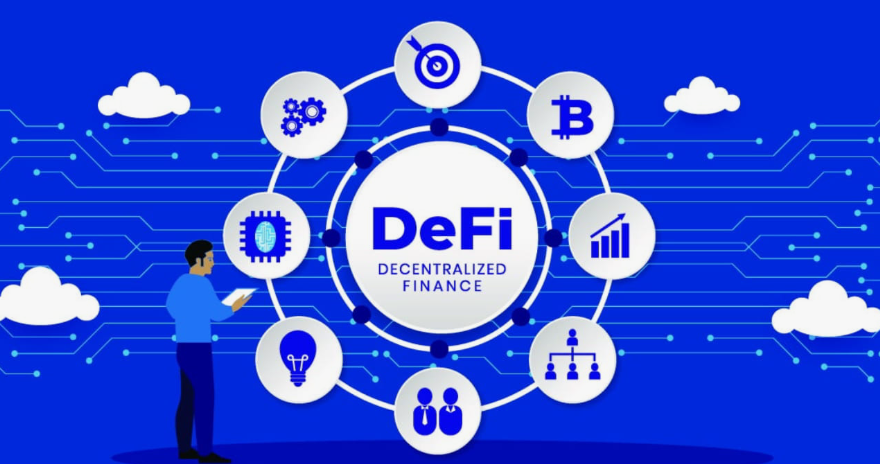DeFi Lending Platforms Comparison 2025 Top 15 Protocols Ranked Complete Guide

The decentralised finance (DeFi) ecosystem has revolutionised traditional lending by eliminating intermediaries and providing unprecedented access to financial services. For crypto investors seeking to maximise their returns, conducting a thorough defi lending platforms comparison has become essential in navigating this rapidly evolving landscape. With over $50 billion locked in DeFi protocols as of 2025, choosing the right lending platform can significantly impact your investment strategy and potential returns.
This comprehensive defi lending platforms comparison will analyse the top protocols based on critical factors including annual percentage yields (APY), security audits, total value locked (TVL), supported assets, and user experience. Whether you’re a seasoned DeFi veteran or a newcomer exploring decentralised lending opportunities, understanding the nuances between platforms like Aave, Compound, MakerDAO, and emerging protocols is crucial for making informed investment decisions.
Understanding DeFi Lending Platforms
Decentralised lending platforms operate on blockchain networks, primarily Ethereum, allowing users to lend and borrow cryptocurrencies without traditional financial institutions. These protocols utilise smart contracts to automate lending processes, determine interest rates algorithmically, and manage collateralization requirements.
Unlike traditional banking systems, DeFi lending platforms offer several advantages, including 24/7 accessibility, global reach, transparent operations, and typically higher yields. Users can earn passive income by supplying liquidity to lending pools, while borrowers can access capital without lengthy approval processes or credit checks.
The fundamental mechanism involves liquidity providers depositing crypto assets into protocol-managed pools. These assets are then available for borrowers who must provide collateral exceeding their loan value. Interest rates fluctuate based on supply and demand dynamics, creating opportunities for yield optimisation across different platforms.
Top DeFi Lending Platforms Comparison
Aave Protocol Analysis
Aave stands as one of the most established and feature-rich DeFi lending platforms, supporting over 30 cryptocurrencies across multiple blockchain networks, including Ethereum, Polygon, and Avalanche. The protocol’s innovative features include flash loans, credit delegation, and variable interest rate switching.
Current APY rates on Aave range from 0.5% to 15% depending on the asset, with stablecoins typically offering 2-5% yields. The platform’s total value locked exceeds $10 billion, demonstrating strong market confidence. Aave’s governance token (AAVE) provides holders with protocol voting rights and fee-sharing benefits.
Security-wise, Aave has undergone multiple audits by leading firms and maintains a robust safety module funded by AAVE token staking. The protocol’s liquidation mechanism protects lenders, while the insurance fund provides additional security layers.

Compound Finance Deep Dive
Compound pioneered algorithmic interest rate determination in DeFi lending, automatically adjusting rates based on supply and demand ratios. The protocol supports major cryptocurrencies, including ETH, USDC, DAI, and WBTC, offering competitive yields ranging from 1% to 8% annually.
The platform’s cToken system allows users to earn interest while maintaining liquidity through tokenised deposits. Compound’s governance model enables COMP token holders to propose and vote on protocol changes, ensuring decentralised decision-making.
With over $8 billion in total value locked, Compound maintains its position as a blue-chip DeFi protocol. The platform’s integration with numerous DeFi applications creates additional yield opportunities through composability benefits.
MakerDAO Ecosystem Overview
MakerDAO operates differently from traditional lending platforms by focusing on DAI stablecoin generation through collateralised debt positions (CDPs). Users deposit ETH, WBTC, or other approved assets to mint DAI loans against their collateral.
The Dai Savings Rate (DSR) currently offers 3.49% APY for DAI holders, providing a risk-free yield on the protocol’s native stablecoin. MakerDAO’s over-collateralization requirements and liquidation mechanisms maintain DAI’s dollar peg stability.
The protocol’s governance through MKR token holders has proven resilient during market volatility, with the community successfully navigating multiple crypto market cycles. MakerDAO’s $8+ billion TVL reflects its foundational role in the DeFi ecosystem.
Yield Comparison Across DeFi Lending Platforms
When conducting a defi lending platforms comparison, yield analysis requires examining both current rates and historical performance patterns. Stablecoin lending typically offers the most predictable returns, with USDC and USDT yields ranging from 2% to 6% across major platforms.
Ethereum lending presents higher volatility but potentially greater returns, with rates fluctuating between 0.5-4% based on market conditions. Alternative assets like LINK, UNI, and MATIC often provide higher yields ranging from 3 to 12%, though with increased risk exposure.
Yield farming opportunities through liquidity mining programs can significantly boost returns, with some platforms offering additional token rewards ranging from 5-20% APY. However, these incentives are typically temporary and subject to change based on protocol governance decisions.
Security Analysis of Leading DeFi Lending Protocols
Security represents the most critical factor in any defi lending platforms comparison. Established protocols like Aave, Compound, and MakerDAO have extensive audit histories and battle-tested smart contracts that have survived multiple market cycles.
Newer platforms may offer attractive yields but carry higher smart contract risks and smaller insurance funds. Due diligence should include reviewing audit reports, checking bug bounty programs, and analysing the protocol’s track record during market stress events.
Insurance coverage varies significantly across platforms, with some offering comprehensive protection through third-party providers while others rely solely on protocol-managed safety modules. Users should consider insurance costs when calculating net yields.
Emerging DeFi Lending Platforms Worth Watching
JustLend (TRON Network)
JustLend operates on the TRON blockchain, offering lower transaction fees compared to Ethereum-based protocols. The platform supports TRX, USDT-TRC20, and other TRON-native assets with competitive yields ranging from 3 to 8% APY.
Venus Protocol (BSC)
Built on Binance Smart Chain, Venus provides lending and borrowing services with significantly lower gas fees. The protocol’s VAI stablecoin minting mechanism resembles MakerDAO’s approach while leveraging BSC’s faster transaction speeds.
Cream Finance Multi-Chain Approach
Cream Finance operates across multiple blockchains, including Ethereum, BSC, and Polygon, offering cross-chain lending opportunities. The protocol supports a diverse range of assets, including smaller-cap cryptocurrencies.
Cross-Chain DeFi Lending Opportunities
The multi-chain DeFi landscape has expanded lending opportunities beyond Ethereum, with protocols on Polygon, Avalanche, Solana, and other networks offering competitive yields with lower transaction costs.
Polygon-based protocols like QuickSwap and Sushi provide familiar interfaces with drastically reduced gas fees, making smaller position sizes economically viable. Avalanche’s rapid finality enables more efficient liquidation mechanisms and responsive interest rate adjustments.
Solana’s lending protocols benefit from the network’s high throughput and low costs, though the ecosystem remains smaller compared to Ethereum alternatives. Cross-chain bridges enable asset movement between networks, creating arbitrage opportunities for sophisticated users.
Risk Management in DeFi Lending
Effective risk management requires diversification across multiple protocols and careful position sizing based on individual risk tolerance. Smart contract risk can be mitigated through protocol diversification and limiting exposure to any single platform.
Liquidation risk management involves maintaining healthy collateralization ratios and monitoring price feeds for supported assets. Many platforms provide email or mobile notifications for approaching liquidation thresholds.
Impermanent loss affects liquidity providers in automated market makers but doesn’t directly impact simple lending positions. However, yield farmers utilising LP tokens as collateral should understand these dynamics.
Advanced Strategies for DeFi Lending Optimization
Yield optimisation strategies include rate shopping across platforms, utilising governance token rewards, and leveraging recursive lending positions. Advanced users often maintain positions across multiple protocols to maximise returns while spreading risk.
Flash loan arbitrage opportunities exist for users with technical expertise, allowing profit capture from rate differentials across platforms. However, these strategies require substantial gas fees and programming knowledge.
Credit delegation features on platforms like Aave enable institutional-grade lending relationships, allowing trusted parties to borrow against others’ collateral with negotiated terms.
Regulatory Considerations for DeFi Lending
The regulatory landscape for DeFi lending continues to evolve, with different jurisdictions taking varying approaches to decentralised protocols. Users should understand their local tax obligations regarding DeFi lending income and capital gains.
Some platforms implement KYC requirements or geographic restrictions to comply with regulatory frameworks. Privacy-focused users may prefer fully decentralised protocols without such restrictions.

Regulatory clarity improvements could drive institutional adoption and increase platform stability, though potential restrictions might limit certain features or accessibility.
Mobile and User Experience Comparison
User interface quality varies significantly across DeFi lending platforms, with established protocols generally offering more polished experiences. Mobile accessibility has improved substantially, with most major platforms providing responsive web interfaces or dedicated mobile applications.
Transaction complexity and gas optimisation features can significantly impact user experience, particularly during network congestion periods. Platforms with batched transactions or Layer 2 integrations provide superior user experiences.
Educational resources and customer support availability should factor into platform selection, especially for newer DeFi users. Comprehensive documentation and active community support channels enhance the overall user experience.
Read More: DeFi Lending Platforms Comparison 2025
Integration and Composability Benefits
DeFi lending platforms’ composability enables integration with yield aggregators, portfolio management tools, and automated strategies. Protocols with extensive third-party integrations offer greater flexibility and optimisation opportunities.
API availability and developer-friendly documentation facilitate custom integration development and automated position management. Institutional users particularly value robust API access for programmatic trading and risk management.
Wallet integrations with popular solutions like MetaMask, WalletConnect, and hardware wallets ensure broad accessibility across different user preferences and security requirements.
Future Developments in DeFi Lending
Layer 2 scaling solutions promise to reduce transaction costs and improve user experience across DeFi lending platforms. Optimism, Arbitrum, and other rollup solutions are seeing increased protocol adoption and liquidity migration.
Central bank digital currency (CBDC) integration could dramatically expand DeFi lending accessibility and legitimacy, though implementation timelines remain uncertain across different jurisdictions.
Artificial intelligence integration for automated yield optimisation and risk management represents an emerging trend that could revolutionise DeFi lending strategy execution.
Conclusion
This comprehensive defi lending platforms comparison reveals that while established protocols like Aave, Compound, and MakerDAO offer proven security and reasonable yields, emerging platforms present opportunities for higher returns with increased risks. Your optimal platform choice depends on your risk tolerance, yield requirements, and technical expertise level.
The DeFi lending landscape continues evolving rapidly, with cross-chain opportunities, Layer 2 scaling, and institutional adoption driving innovation and growth. Success in DeFi lending requires ongoing education, careful risk management, and strategic diversification across multiple protocols.
FAQs
Q1. What factors should I consider in a DeFi lending platform comparison?
Key factors include annual percentage yields (APY), security audit history, total value locked (TVL), supported assets, gas fees, insurance coverage, and liquidation mechanisms. Additionally, consider the platform’s governance model, development activity, and integration ecosystem when making your selection.
Q2. Are DeFi lending platforms safe for beginners?
While DeFi lending offers attractive yields, beginners should start with established platforms like Aave, Compound, or MakerDAO that have extensive audit histories. Start with small amounts, understand liquidation risks, and never invest more than you can afford to lose. Consider using stablecoins initially to minimise price volatility exposure.
Q3. How do DeFi lending rates compare to traditional banking?
DeFi lending platforms typically offer significantly higher yields than traditional savings accounts, with stablecoin lending offering 2-6% APY compared to bank savings rates below 1%. However, DeFi carries additional risks including smart contract vulnerabilities, regulatory uncertainty, and price volatility.
Q4. Can I lose money lending on DeFi platforms?
Yes, several risks exist including smart contract exploits, platform bankruptcy, regulatory changes, and liquidation of collateral positions. While simple lending positions have lower risk than leveraged strategies, no DeFi investment is completely risk-free. Diversification and thorough research help mitigate potential losses.
Q5. Which DeFi lending platform offers the highest yields?
Yields vary constantly based on market conditions and protocol incentives. Currently, newer platforms often offer higher rates to attract liquidity, while established protocols like Aave and Compound provide more conservative but stable returns. Always balance yield potential with security considerations, and never chase unsustainably high rates.
